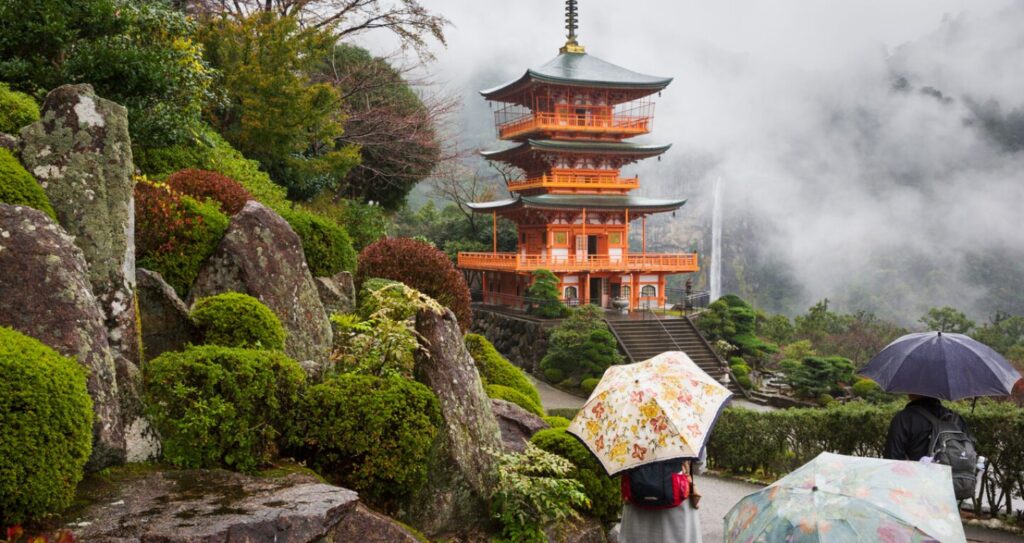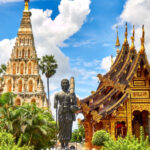Step into a land where tradition goes hand in hand with innovation, where the whispers of the past echo through bustling streets lined with cutting-edge technology. Japan, a country renowned for its seamless fusion of the ancient and the modern, offers travelers a captivating journey through time. While the world marvels at robot cafes and electric cars, there’s a hidden treasure trove of historical sites waiting to be explored. These sites not only serve as windows to Japan’s rich history but also as portals into the hearts and minds of its people. From ancient temples to storied castles, each site holds a story waiting to be discovered, a connection waiting to be forged between past and present. Join us as we embark on a journey through Japan’s 10 best historical sites, where the threads of history weave together a tapestry of culture, tradition, and humanity.
1. Meiji Jingu (Tokyo)

Nestled in the heart of Shibuya, Tokyo, stands the iconic Meiji Shrine, a revered testament to Japan’s rich history and cultural heritage. Originally commissioned in honor of Emperor Meiji and Empress Shoken, this sacred sanctuary pays homage to their legacy and pivotal role in Japan’s modernization. Renowned as a cornerstone of Shinto reverence in Tokyo, the shrine sits serenely amidst 200 acres of tranquil parkland, enveloped by the hush of nature and guarded by a majestic 12-meter torii gate, beckoning visitors into its sacred embrace.
Entrance to the Meiji Shrine is graciously free, inviting all who seek solace and spiritual reflection to wander its hallowed grounds from the break of dawn until dusk. Accessing this haven of tranquility is made convenient via the JR Yamanote line, disembarking at the Harajuku station, from where a short stroll leads to the sanctuary’s revered gates.
2. Sensoji Temple
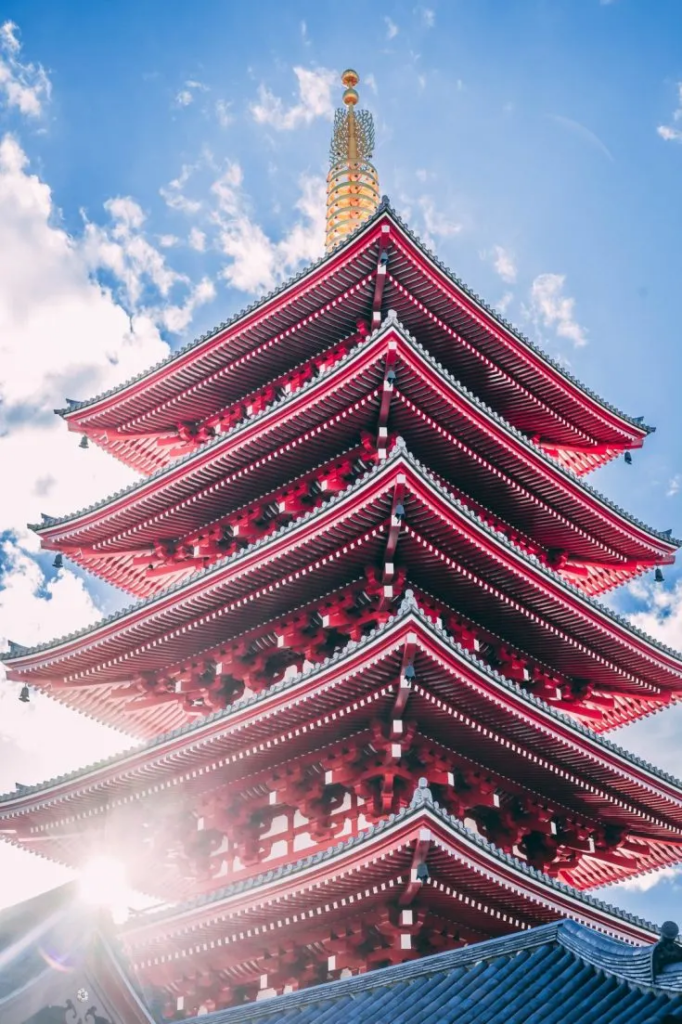
Sensoji Temple stands as Tokyo’s oldest temple, a timeless gem amidst the city’s bustling landscape of spirituality. Amidst a plethora of temples, Sensoji’s roots stretch back a staggering one and a half millennia, anchoring it as a cornerstone of Tokyo’s cultural heritage. Not only does it boast the largest souvenir market in the city, but it also beckons visitors with iconic landmarks like the majestic Kaminarimon Gate. Beyond its historical and cultural significance, Sensoji Temple offers a captivating array of sightseeing opportunities, making it an essential destination for those eager to immerse themselves in Tokyo’s rich tapestry of tradition and modernity.
3. Kamakura
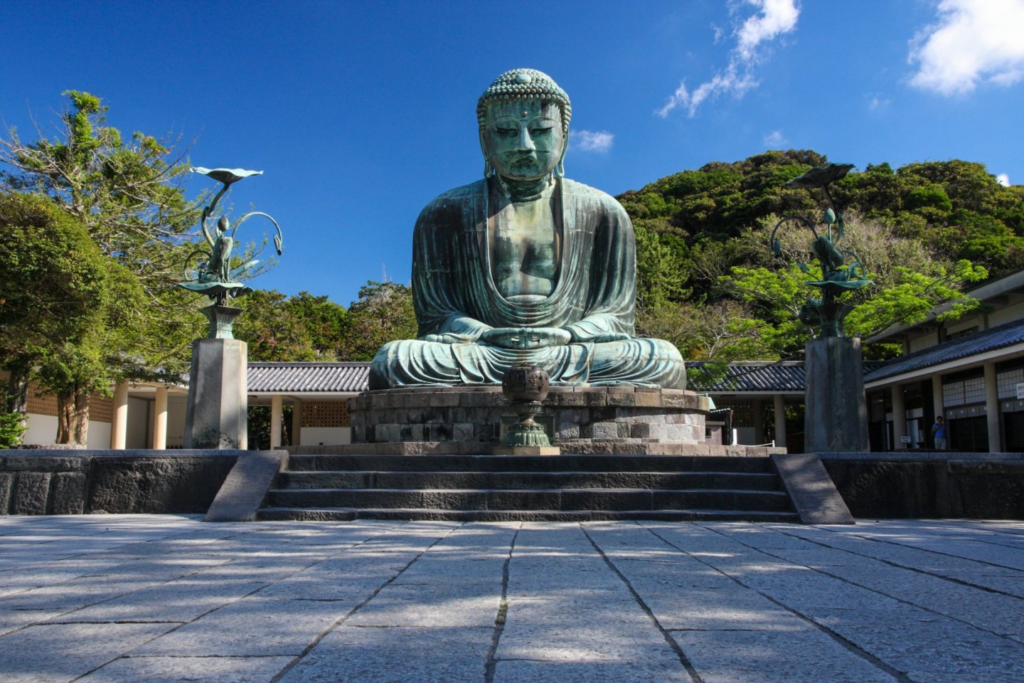
Nestled along the coastline of Kanagawa Prefecture, just an hour’s journey from the bustling metropolis of Tokyo, lies the enchanting city of Kamakura. Once a thriving political hub during the late 12th century and continuing to exert its influence even after the fall of the Kamakura government in the 14th century, Kamakura now stands as a stark juxtaposition – a tranquil haven teeming with tourists, adorned with a plethora of temples, historic landmarks, and shrines. Its sandy shores beckon visitors during the summer months, adding to the city’s allure. Among its myriad attractions, the majestic Great Buddha, serene Hokokuji Temple, venerable Hachimangu Shrine, ancient Kenchoji Temple, and mystical Zeniarai Benten stand out as must-see destinations, each offering a glimpse into Kamakura’s rich tapestry of history and culture.
4. Kyoto Golden Pavilion

Nestled in the tranquil embrace of Northern Kyoto lies a gem that has captured the lenses of countless photographers and the hearts of history enthusiasts alike. This Zen temple stands as a testament to Japan’s rich heritage, its name whispered in reverence across generations. Adorned with layers of shimmering gold leaf, the temple’s three-tiered pavilion tells a tale of opulence and spirituality intertwined. Once the retreat of the esteemed shogun Ashikaga Yoshimitsu, its transformation into a Zen sanctuary after his passing in 1408 marked a pivotal moment in its storied history.
Set against the serene backdrop of a picturesque pond, the temple has weathered the passage of time through meticulous reconstruction efforts, culminating in its resplendent form as we see it today, a testament to the enduring legacy of Japanese craftsmanship. To embark on your own pilgrimage to this sacred site, travelers can embark on a journey via Bus numbers 101 or 205 from Kyoto Station or opt for the Karasuma line, alighting at Kitaoji Station.
5. Kyoto Imperial Palace

Until 1868, the Kyoto Imperial Palace served as the residence for the Japanese Imperial Family, marking a significant era in the nation’s history. With the capital relocating from Kyoto to Tokyo thereafter, the palace stands as a poignant testament to Japan’s rich cultural legacy. Nestled within the heart of Kyoto, the palace resides within the expansive grounds of the Kyoto Imperial Park, offering visitors a glimpse into the country’s imperial past. Adjacent to this historic landmark lies the Sento Imperial Palace, adding to the allure of the park’s attractions.
Having endured a devastating fire in 1855, the Kyoto Imperial Palace underwent extensive restoration, preserving its majestic halls, picturesque gardens, and imposing gates. Today, the palace grounds welcome tourists to wander freely, inviting exploration without the need for prior arrangements. Regrettably, access to the interior of the buildings remains restricted, though the exterior offers ample opportunity for visitors to immerse themselves in the grandeur of Japan’s imperial history.
6. Kiyomizudera, Kyoto

The Kiyomizudera Temple, also affectionately known as the Pure Water Temple, stands as a revered emblem of Japan’s rich historical tapestry. Its origins tracing back to 780, the temple derives its name from its auspicious location atop the Otowa Waterfall, symbolizing purity and spiritual sanctity. Once affiliated with the venerable Hosso sect, the oldest Buddhist school in Japan, Kiyomizudera was designated a UNESCO World Heritage Site in 1994, further cementing its significance on the global stage.
The temple’s iconic wooden terrace, extending gracefully from its main hall, stands as a testament to its architectural splendor. From this vantage point, visitors are treated to a breathtaking panorama of cherry blossoms and maple trees enveloping the temple grounds, with glimpses of Kyoto’s timeless beauty stretching into the horizon. Beyond its striking facade, Kiyomizudera boasts other noteworthy attractions such as the revered Okunoin Hall and the elegant Koyasu Pagoda, each adding to the allure of this venerable site.
7. Hiroshima Peace Memorial Park

The Peace Memorial Park in Hiroshima stands as one of Japan’s foremost historical landmarks, drawing in crowds of tourists yearning to pay homage to its poignant legacy. Spanning an expansive 120,000 square meters, this sprawling park offers a serene sanctuary amidst the bustling urban landscape. Once a bustling political and commercial hub, the area was forever altered by the devastation of the atomic bombing. Now, it serves as a solemn testament to peace, housing poignant memorial facilities including the renowned Peace Memorial Museum. At its heart stands the iconic A-Bomb Dome, also known as the Hiroshima Peace Memorial, a haunting reminder of the city’s resilience in the face of unimaginable tragedy.
8. Temples of Nara

Nara stands as a gem among Japan’s historical cities, boasting a wealth of magnificent temples that beckon visitors from around the globe. Among the must-visit landmarks are the renowned “Seven Great Temples of Nara,” a collection of sacred sites steeped in centuries of history and spirituality. From the iconic Todaiji Temple to the serene Yakushiji Temple, each holds a place of honor on any traveler’s bucket list. Remarkably, many of these temples have stood the test of time, their architectural splendor and cultural significance preserved for generations to come.
9. Nikko

Nestled within the heart of Japan lies Nikko, a town steeped in history and natural splendor. Its crown jewel, Toshogu Shrine, stands as a testament to the grandeur of ancient craftsmanship, housing the revered mausoleum of Tokugawa Ieyasu. For centuries, Nikko has been revered as a sacred site, a haven for both Shinto and Buddhist mountain worship, drawing pilgrims and seekers alike since the 1600s. Surrounding this cultural epicenter is Nikko National Park, a veritable playground of natural wonders. Here, visitors are treated to a picturesque tapestry of hot springs, rugged mountainscapes, cascading waterfalls, tranquil lakes, winding hiking trails, and even the playful antics of wild monkeys. Among its many charms, the Okunikko area stands out, particularly enchanting during the autumn months when vibrant hues paint the landscape in breathtaking beauty. As a quintessential stop along Japan’s Romantic Road, Nikko beckons travelers to immerse themselves in its rich tapestry of history, culture, and natural allure.
10. Osaka Castle
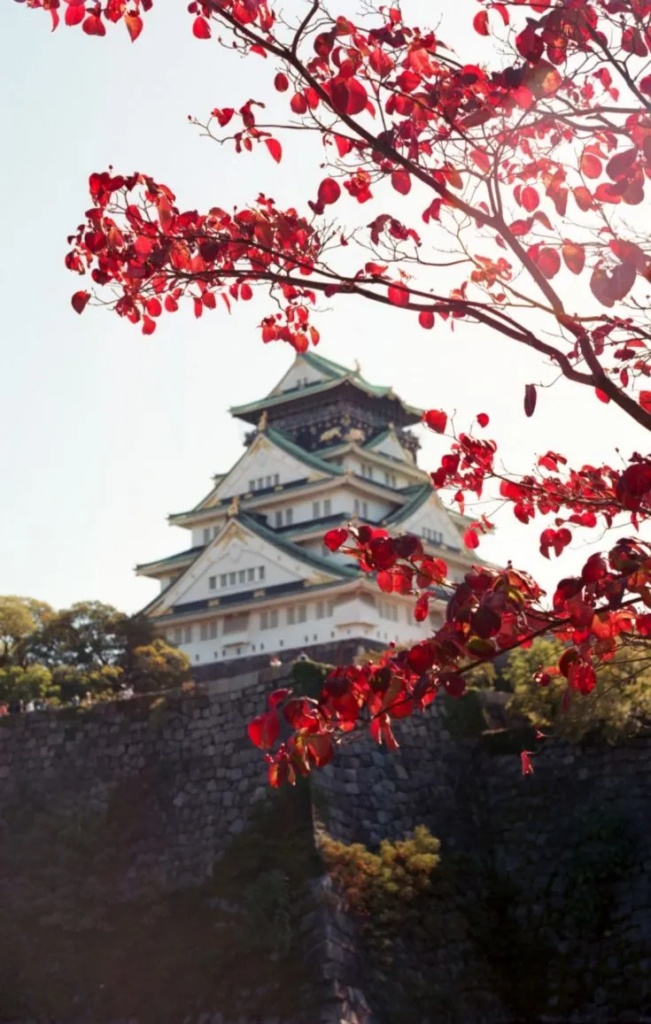
The Osaka Castle stands as a timeless symbol of Japan’s architectural splendor, gracing the landscape with its majestic presence. Originating in 1583 on the grounds once occupied by the Ishiyama Honganji Temple, it emerged from the ashes of destruction to fulfill Toyotomi Hideyoshi’s vision of a new epicenter for Japan. At its zenith, the Osaka Castle reigned as the largest of its kind in the country, a testament to its significance in shaping Japan’s history.
Central to the castle’s allure is its towering castle keep, a masterpiece adorned with secondary citadels, turrets, imposing gates, sturdy stone walls, and encircling moats. Yet, its charm extends beyond fortifications to encompass the enchanting Nishinomaru Garden. Home to over 600 cherry trees, this verdant oasis boasts a harmonious blend of natural beauty and cultural heritage, offering visitors respite amidst a tapestry of blooms. Within its expansive 2-square-kilometer domain lie treasures like guesthouses, tea houses, and sprawling green expanses, beckoning explorers and locals alike to immerse themselves in its timeless allure. As spring dawns and cherry blossoms adorn the landscape, the Osaka Castle transforms into a veritable paradise, captivating hearts with its ethereal beauty and timeless charm.
11. Nagasaki Peace Park
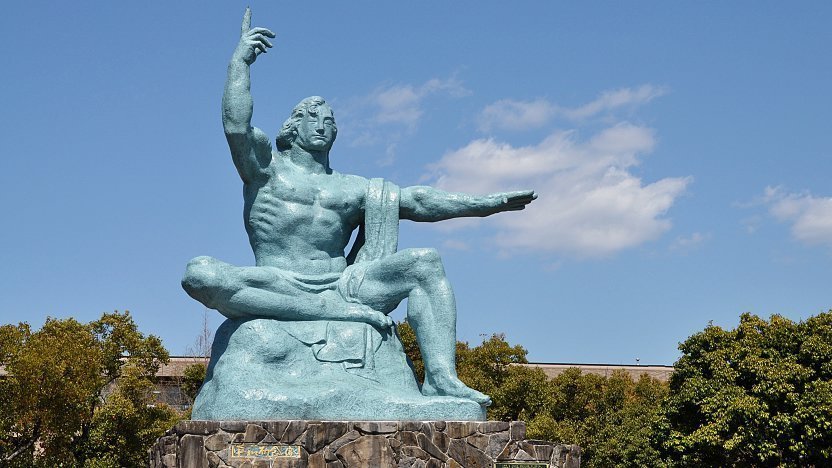
Nagasaki Peace Park stands as a poignant landmark beckoning visitors to reflect on a dark chapter in history. Erected in remembrance of the tragic atomic bombing that ravaged Nagasaki in August 1945, this park is more than just a tourist spot—it’s a solemn tribute to those who perished and a testament to the enduring quest for peace. Within its grounds, amidst serene gardens and tranquil pathways, lies the Hydrocenter Park, a poignant reminder of the epicenter of destruction. Here, amidst the tranquility, remnants of that fateful day still echo, offering visitors a sobering glimpse into the past.
12. Fukuoka Castle

Nestled within the lush expanse of Maizuru Park lies the poignant reminder of Fukuoka Castle, its once grandeur now reduced to haunting ruins. Despite its evocative name, the castle exists today only in fragments, a testament to the passage of time and the tumultuous shifts of history. Originally a formidable stronghold, it met its demise during the Meiji Restoration, deemed obsolete in the march towards modernization. Yet, amidst the crumbling walls and silent turrets, the park retains its allure, beckoning visitors with winding pathways and panoramic vistas. Built in the early 17th century, Fukuoka Castle stands as a silent sentinel, inviting exploration and reflection upon the layers of Japan’s storied past.
